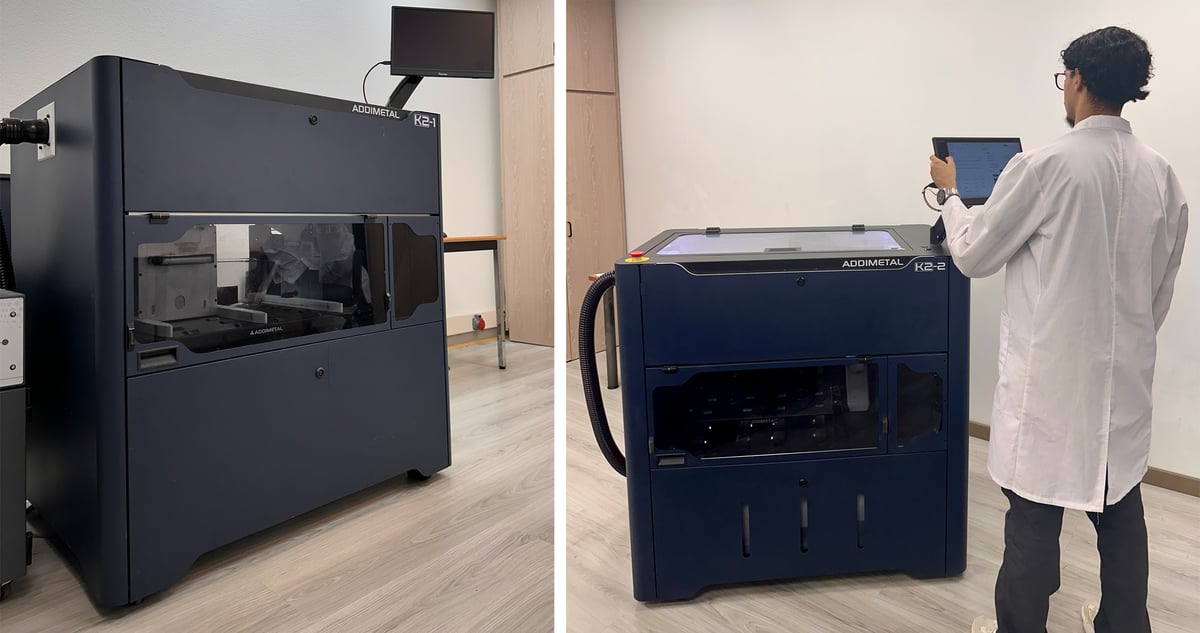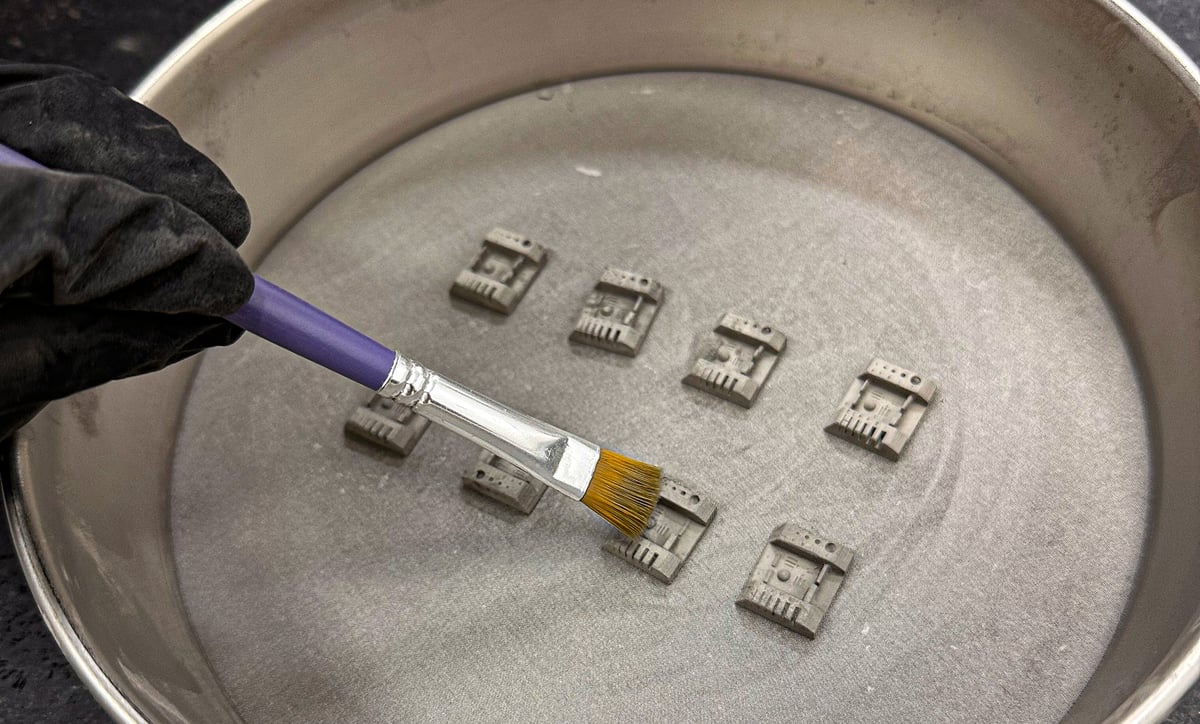French 3D printing start-up, Toulouse-based Addimetal is launching its first machine at Formnext: a metal binder jetting solution that’s more affordable than the competition. It features open perimeters, and is open to third-party binders and metal powders from the metal injection molding industry.
After four years of development and a year of beta testing, the K2-2 offers manufacturers what the company is calling a “breakthrough solution” to produce complex metal parts with precision and speed.
Featuring customizable printing parameters, the K2-2 enables the production of “high-resolution, complex metal parts at a lower cost,” the company says.
“With the K2-2, we provide a solution that bridges the gap between lab-scale research and full-scale industrial production,” says Mohamad Koubar, CEO of Addimetal.

The K2-2 features an 8-liter capacity with a 200 x 200 x 200 mm build volume, which makes it the smallest metal binder jetting 3D printer on the market behind the Markforged PX100 at 250 x 217 x 70 mm.
Resolution is tunable from 360 to 1080 dpi, which is the lowest among the competition. Desktop Metal’s Production System P-50 and HP Metal Jet S100 print at 1,200 dpi, while the Markforged PX100 and the Desktop Metal Shop System hit 1,600 dpi.
Addimetal says the K2-2 has the largest binder print head on the market, covering over half the platform in one pass. It doesn’t release the number of nozzles on the print head, which is a typical data point of other metal binder jetting printer manufacturers.

Open Materials
Unique in the metal binder jetting market, Addimetal enables customers to select any binder and powder combination on the market including options from the metal injection molding industry.
“Our goal is to enable customers to use, alongside our own solutions, third-party binders that are already proven or qualified,” says Franck Liguori, Addimetal’s Co-founder & CCO. “This approach also allows experimentation with new options, such as binders from the MIM industry, leveraging existing knowledge in sintering processes.
To unlock this flexibility, though, consumables first need to be qualified on the K2-2. Qualification services include an initial assessment for compatibility (e.g., rheology and chemical compatibility) and “customization of the electrical solicitation profile of the jetting nozzles to ensure proper drop size and optimized powder bed penetration,” adds Liguori.
In addition to the glass sunroof on the machine, there’s real-time environmental control with visual sensors.
Addimetal does not offer equipment for the required post-processing steps in metal binder jetting including depowdering, debining, and sinterering but will recommend options based on your specific needs and budget.
Addimetal K2-2 Tech Specs
- Technology: metal binder jetting
- Build Volume: 200 x 200 x 200 mm
- Resolution: 360 – 1080 dpi
- Layer Thickness: n.a.
- Build Capacity: 8 L
- Materials: Open materials can be qualified, available currently 316L stainless steel and Inconel 718 nickel alloy with binders.
- Price: starting around $200,000
See the K-2-2 in action at Formnext 2024 from November 19 to 22 at Hall 12.0, Booth E21
You May Also Like:
License: The text of "Lower-Cost Metal Binder Jetting from Addimetal’s New K2-2 3D Printer" by All3DP Pro is licensed under a Creative Commons Attribution 4.0 International License.


